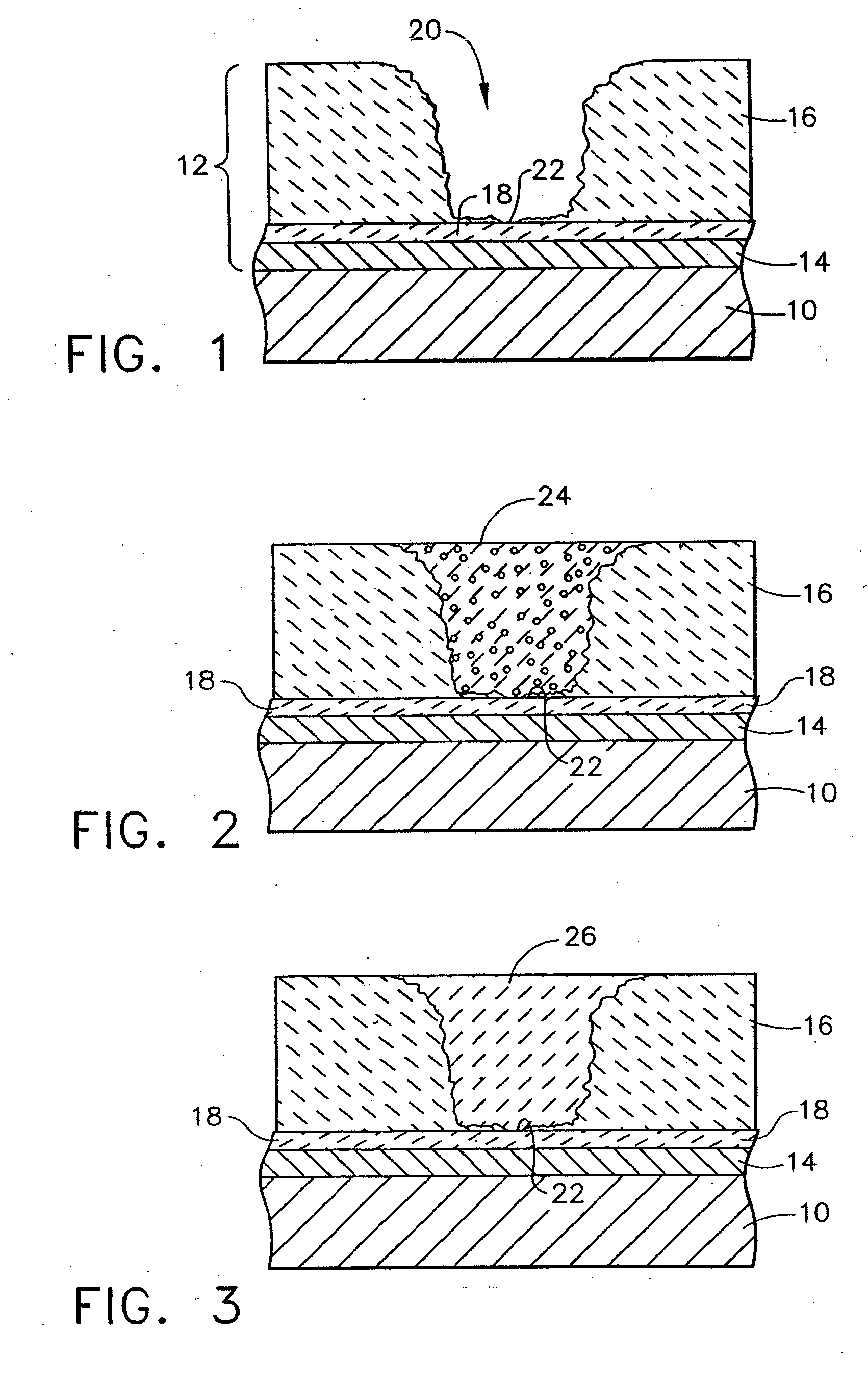Field repairable high temperature smooth wear coating
a high temperature, wear-reparable technology, applied in the direction of machines/engines, mechanical equipment, light and heating equipment, etc., can solve the problems of high temperature durability of engine components, increased heat transmission, and insufficient mechanical properties, etc., to achieve improved heat rejection, low roughness finish, and improved heat rejection
- Summary
- Abstract
- Description
- Claims
- Application Information
AI Technical Summary
Benefits of technology
Problems solved by technology
Method used
Image
Examples
example 1
[0038]
Material Based on WeightGrams / WeightPercentagePercentDenatured Alcohol18.0 [5.39%]SM8 alumina37.6 [11.26%]A14 (−325 mesh) alumina51.6 [15.45%]Silicone binder (SR350)31.6 [9.46%]T-64 (−100 mesh) alumina143.1 plus 51.6[58.31%]Dibutyltin Dilaurate or Di-n-.2-.4 [0.001 toButylbis (2,4-0.1%]pentanedionate)tin
example 2
[0039]
Material Based on WeightPercentage]Weight %Denatured Alcohol or Acetone5.4SM8 alumina11.3A14 (−325 mesh) alumina30.6Silicone binder (SR3509.5T-64 (−100 mesh) alumina42.9Dibutyltin Dilaurate or Di-n-0.1Butylbis (2,4-pentanedionate)tin
example 3
[0040]
Material Based on WeightGrams / WeightPercentagePercentDenatured Alcohol 1-35% (balance)SM8 alumina 0-35%A14 (−325 mesh) alumina 0-35%Silicone binder (SR350) 3-45%T-64 (−100 mesh) alumina20-70%Accelerant0.01 to 15Dispersant0.01 to 5
[0041] The above are exemplary, and are not limiting. Other combinations and variations of ingredients and amounts are within the scope of the invention.
[0042] In order to prepare the chemical composition 24 the ceramic powder and nano-sized ceramic material(s) are combined with the binder and solvent in an amount sufficient to preferably form a paste-like mixture. A ceramic to binder ratio of about 8 to 1 is generally preferred, such as when using the above-noted combinations. Although a paste-like mixture is preferred, additional solvent can be provided to yield a more fluid mixture if spraying application methods are to be used.
[0043] Preferred binders include silicone resins manufactured by GE Silicones under the names SR350 and SR355, and class...
PUM
| Property | Measurement | Unit |
|---|---|---|
| Temperature | aaaaa | aaaaa |
| Length | aaaaa | aaaaa |
| Length | aaaaa | aaaaa |
Abstract
Description
Claims
Application Information
 Login to View More
Login to View More - R&D
- Intellectual Property
- Life Sciences
- Materials
- Tech Scout
- Unparalleled Data Quality
- Higher Quality Content
- 60% Fewer Hallucinations
Browse by: Latest US Patents, China's latest patents, Technical Efficacy Thesaurus, Application Domain, Technology Topic, Popular Technical Reports.
© 2025 PatSnap. All rights reserved.Legal|Privacy policy|Modern Slavery Act Transparency Statement|Sitemap|About US| Contact US: help@patsnap.com

